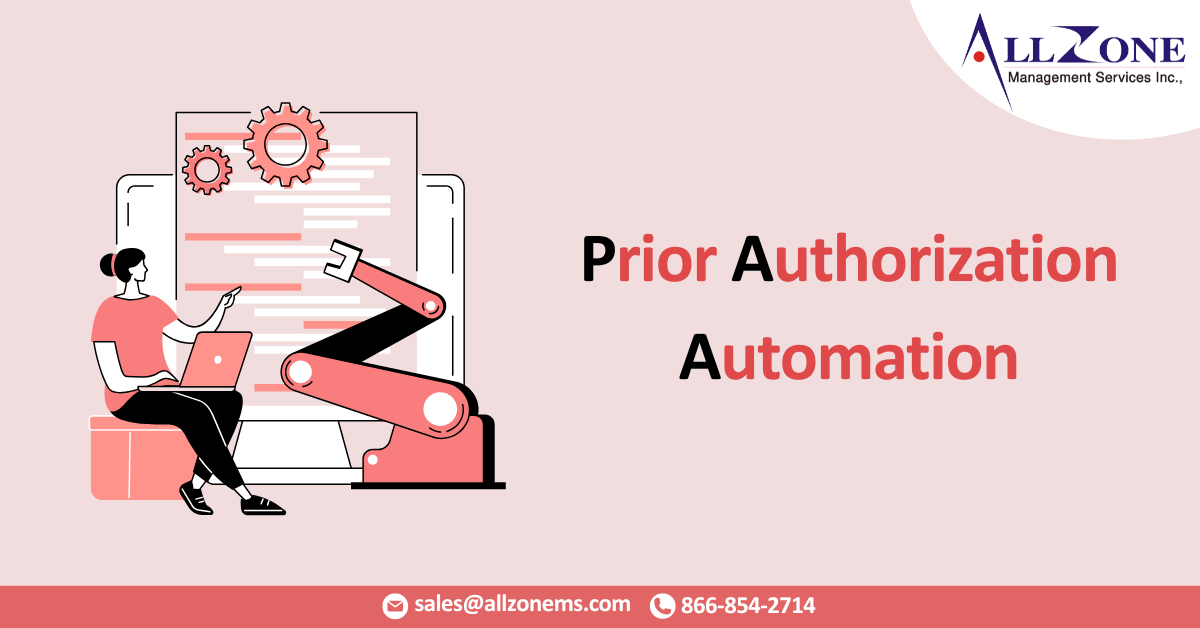In the intricate dance of healthcare administration, prior authorization often feels like an unwelcome and time-consuming interruption. The manual processes involved – phone calls, faxes, and endless paperwork – not only burden staff but also create significant bottlenecks that can lead to delayed patient care, increased operational costs, and, critically, a higher rate of claim denials. Prior Authorization Automation offers a powerful solution to these challenges, streamlining workflows and reducing administrative friction.
However, the tide is turning. Prior Authorization Automation is emerging as a powerful solution, offering a streamlined approach to prior authorization that can significantly boost revenue and drastically reduce denials for healthcare providers.
The Pain Points of Manual Prior Authorization:
Before diving into the benefits of automation, it’s crucial to understand the challenges posed by traditional, manual prior authorization processes:
- Administrative Burden: Staff spend countless hours navigating complex payer rules, completing forms, and following up on submissions. This pulls valuable resources away from patient care and other essential tasks.
- Increased Denials: Manual processes are prone to errors – incomplete information, incorrect codes, or failure to meet specific payer requirements can all lead to denials, directly impacting revenue.
- Delayed Care: The time it takes to obtain prior authorization manually can delay necessary treatments and procedures, leading to patient dissatisfaction and potentially adverse health outcomes.
- Lack of Transparency: Tracking the status of authorizations can be cumbersome, making it difficult to proactively address potential issues and leading to uncertainty for both providers and patients.
- High Operational Costs: The cumulative effect of staff time, paper waste, and rework due to denials contributes to significant operational expenses.
The Transformative Power of Prior Authorization Automation:
Prior Authorization Automation leverages technology to streamline each step of the prior authorization process, offering a multitude of benefits that directly impact a healthcare provider’s bottom line and operational efficiency. Here’s how:
1. Streamlined Workflow and Reduced Administrative Costs:
Automation platforms integrate directly with Electronic Health Records (EHRs) and payer systems. This allows for:
- Automated Eligibility Checks: Instantly verify patient insurance coverage and identify the need for prior authorization.
- Intelligent Form Completion: Automatically populate forms with relevant patient and procedure information from the EHR, minimizing manual data entry and errors.
- Electronic Submission: Securely transmit authorization requests to payers electronically, eliminating the need for faxes and mail.
- Real-time Tracking: Monitor the status of authorization requests in real-time, providing transparency and allowing for proactive follow-up.
- Automated Notifications: Receive alerts regarding approvals, denials, or requests for additional information, enabling timely action.
By automating these tasks, healthcare organizations can free up significant staff time, allowing them to focus on patient care and other revenue-generating activities. This reduction in administrative overhead directly translates to lower operational costs.
2. Significant Reduction in Claim Denials:
One of the most significant benefits of prior authorization automation is the dramatic decrease in claim denials. This is achieved through:
- Built-in Payer Rules and Logic: Automation systems are equipped with up-to-date payer rules and guidelines, ensuring that requests are submitted accurately and meet all requirements.
- Error Prevention: Automated data population and validation checks minimize human errors that often lead to denials.
- Proactive Identification of Issues: The system can identify potential issues or missing information before submission, allowing for corrections and preventing denials.
- Improved Communication with Payers: Electronic communication streamlines the exchange of information, reducing misunderstandings and facilitating faster approvals.
- Comprehensive Audit Trails: Detailed records of all authorization activities provide valuable insights for identifying and addressing recurring denial reasons.
A reduction in denials directly translates to increased revenue as more claims are paid the first time around, minimizing the need for costly and time-consuming appeals processes.
3. Accelerated Reimbursement Cycles:
Prior Authorization Automation speeds up the entire prior authorization process, leading to faster approvals and, consequently, quicker reimbursement. By leveraging electronic submissions and real-time tracking, this technology eliminates delays associated with manual processes, ensuring that claims are processed and paid more efficiently. This improved cash flow is crucial for the financial health of any healthcare organization.
4. Enhanced Patient Satisfaction:
While the financial benefits are clear, prior authorization automation also positively impacts the patient experience. By streamlining the process, patients experience:
- Reduced Delays in Care: Faster approvals mean patients can receive necessary treatments and procedures more promptly.
- Improved Communication: Proactive notifications and transparent tracking keep patients informed about the status of their authorizations.
- Less Administrative Burden: Patients are shielded from the complexities of the prior authorization process, reducing their stress and frustration.
A positive patient experience contributes to patient loyalty and can enhance a healthcare provider’s reputation.
5. Data-Driven Insights for Continuous Improvement:
Automation platforms often come with robust reporting and analytics capabilities. This allows healthcare organizations to:
- Identify Trends in Denials: Analyze denial patterns to understand the root causes and implement strategies for prevention.
- Track Key Performance Indicators (KPIs): Monitor metrics such as authorization turnaround time, denial rates, and staff efficiency to measure the impact of automation.
- Optimize Workflows: Gain insights into process bottlenecks and identify areas for further improvement.
- Negotiate Better Payer Contracts: Data on authorization patterns and denial reasons can be valuable during payer contract negotiations.
By leveraging these data-driven insights, healthcare organizations can continuously refine their prior authorization processes and further enhance revenue cycle management.
Conclusion:
In today’s evolving healthcare landscape, clinging to manual prior authorization processes is no longer a sustainable or financially sound strategy. Embracing Prior Authorization Automation offers a powerful pathway to boosting revenue, reducing costly denials, improving operational efficiency, and enhancing the patient experience. By leveraging technology for Prior Authorization Automation, healthcare providers can transform this critical function from a burdensome obstacle into a streamlined and efficient component of their revenue cycle, ultimately contributing to a healthier bottom line and better patient care. The investment in Prior Authorization Automation is not just an operational upgrade; it’s a strategic move towards a more financially secure and patient-centric future

